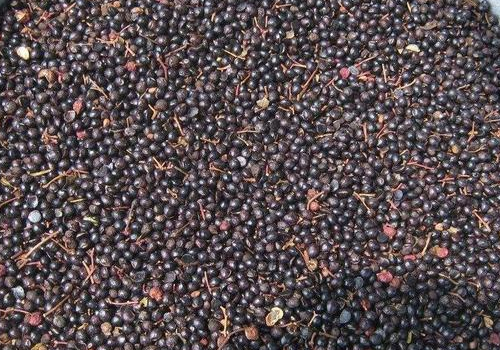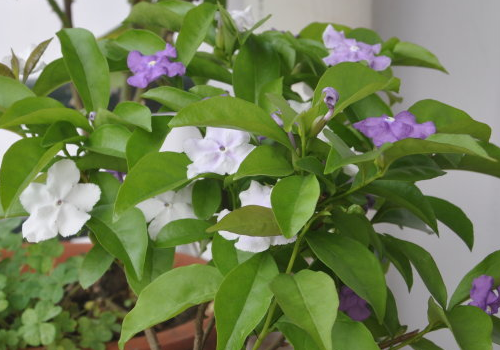What is the method of breeding clematis?
But some plants are not suitable for indoor breeding, you know? Is clematis poisonous? What is the method of breeding.
Is clematis poisonous:
Clematis is not poisonous. It has a certain ornamental value, in addition, it also has medicinal value. Clematis can be used as medicine to treat many diseases, clematis is mainly diuretic, and can dredge channels and collaterals, embellish intestines and defecate, and have the effect of detoxification.

What is the method of clematis culture:
1. Soil. Like fertile, well-drained alkaline loam, avoid stagnant water. The most important thing is that the basin soil must be breathable, if possible, choose some better soil, after strict disinfection, poor conditions can use perlite and peat, try not to dig garden soil pot.
2. Watering. Clematis growing well requires smooth root breathing and alternating wet and dry watering. To let the basin soil dry time, generally 2-3 cm below the soil surface dry, can be watered. If it is a plastic basin, it is another matter. According to the weight of the basin soil, it should be watered if it becomes lighter; if you observe the basin soil, if you look at the basin soil, you need to water it. Watering must be thoroughly watered. The concept of watering thoroughly is at least water flowing out from the bottom of the basin. Pay attention to timely ventilation after watering.
3. Light. Potted clematis were cultivated in full light from autumn to early spring of the next year, without shade. Strong light after entering summer will lead to aging and yellowing of clematis leaves, poor growth, and need proper shading. In indoor maintenance, it is necessary to ensure at least 4 hours of sunlight every day, otherwise clematis will not grow well.
4. Fertilization. Adhere to the application of thin fertilizer frequently, avoid eager for quick success and quick profit. There are many varieties of clematis, some of which are not fertilizer-tolerant, such as long petals, evergreen, Montana, and should be less fertile when maintained. In addition, when applying fertilizer to young seedlings, it is best to use only promoting root and slow seedling fertilizer, not heavy fertilizer. Winter is the best season to fertilize clematis, which is basically applied once and managed for several months.
Buy one or two lovely plants and go home.
The cultivation method of drug-addicted weeds teaches you to raise a household air protection god.
Drug-addicted grass plants are short and plump, have good negative tolerance, give off a faint fragrance with hand touch, absorb indoor harmful gases and release fresh negative oxygen ions, purify the air, beautify the environment, reduce pollution and protect eyes. Known as the hidden killer of the nemesis of health, it is good for the home environment to absorb poisonous and harmful gases in the indoor air. Let's take a look at the breeding methods of drug-addicted weeds:
Basic information about drug addicts:
Drug addict, scientific name lemon vanilla or wrinkled leaf mint, Latin name: Melissa Officinalis, English name: Lemon balm, aliases also have balsam, bee balsam, honeybee flower and so on. It is a perennial perennial root herb of Labiatae.
Drug-addicted grass, plant height 50 cm, stems and leaves with soapy fragrance, wheel umbels, lip-shaped white flowers, florescence from July to August. Heat-resistant and cold-resistant, drought-resistant, waterlogging-resistant and pruning-resistant. The Beginning of Winter pruned once before, can survive the winter safely. It can withstand the low temperature below 0 °C in winter and the high temperature above 30 °C in summer, and the most suitable growth temperature is between 10 °C and 20 °C. Vanilla is easy to reproduce and can be sowed, cut and propagated.
Culture methods of drug-addicted weeds:
1, sunshine: drug addicts like to have bright light, if the room is well lit, you can put the drug weeds in a sunlit place, and the room is normally ventilated; if the room is not well lit, such as toilets, kitchens, etc., the drug weed is moved to a sunny place after 72 hours in the room, or put it back in 72 hours. It can also be placed outside to absorb light and breathe when the weather is not cold.
2. Temperature: the requirement of temperature for drug-sucking grass culture is not high. It can withstand the low temperature of less than 0 ℃ in winter, but the high temperature of more than 30 ℃ in summer is limited, and the most suitable growth temperature is between 10 and 20 ℃.
3. Watering: it can be irrigated with clean water or rice washing water every 3-5 days. If the branches and leaves wilt due to lack of water and replenish water immediately, it will recover soon. Supplementary nutrient solution can be used with commonly used plant nutrient solution.
4. Pruning: the drug-addicting grass grows very fast. It is recommended to trim it once a week and cut it off on the top of the higher branches where there are new leaves. If there are black-edged leaves or old leaves at the roots, don't worry, just pull them off.
5. Insect pests: drug addicts can emit germicidal volatile oil and absorb harmful gases, so there is basically no pest problem, as long as the moisture needed for the growth of drug-addicted weeds and the temperature are taken care of.
Drug-addicted grass is a kind of plant which is more favorable to the air environment at home. Planting in the middle of the home can absorb harmful gases and release negative oxygen ions, which is good for human health, and the breeding method is simple. It is best to put several pots in the home.
More plants:
[ping an tree] [evergreen] [evergreen] [star anise plate] [southern bamboo] [ivy] [arrow lotus]
[Magnolia] [Primrose] [Spring Orchid] [Milan] [Magnolia] [Magnolia] [White Crane] [Fire Crane]
[Cymbidium] [eight Immortals] [Dahlia] [Chrysanthemum morifolium] [clematis] [plum] [pansy] [Daphne]
[tulips] [night incense] [evening jade] [mulberry] [longevity flowers] [African chrysanthemum] [mimosa] [bluebells]
[water lily] [perfume lily] [hydrangea] [red maple] [chicken claw maple] [string of red] [iris]
Which flowers are not suitable for breeding in the house?
Recently, the editor of the Garden Ecological Network can always see that small potted plants are very popular in the market, and the market sales are very good. As a person who also likes to raise green plants, I can't help but share with you which plants are not suitable for breeding indoors. These plants that are not suitable for indoor breeding are not absolutely impossible to breed, but relatively speaking, they are suitable for planting outside the house for everyone to enjoy.
Jade clove
Elderberry
1, pine and cypress plants, jade cloves, elderberry and so on, this kind of plant will produce peculiar smell, cause loss of appetite, nausea and other abnormal reactions.
Night incense
2. Flowers with high oxygen consumption. Such as cloves, nocturnal incense, the health of patients with heart disease and hypertension is extremely harmful. Photosynthesis during the day reduces the concentration of indoor oxygen, and a large amount of exhaust gas is discharged at night, which is harmful to health.
Hydrangea (geranium)
3. Flowers and plants that make people allergic. Such as hydrangea (geranium), red bean tree, wild chrysanthemum, evergreen, broad bean, pineapple, ginkgo and lacquer tree, often touch, will cause skin allergy. The scent of flowers such as roses, roses and lilies can also make some people allergic.
Oleander
4. The flower-scented molecules of oleander stimulate nerves, make people drowsy and reduce their intelligence. in addition, oleander is also one of the plants with strong toxicity.
Tulip
5. The flowers of tulips contain poisonous alkaloids, and too much contact will make the hair fall off.
Poinsettia
Tiger thorn plum
6. Other plants such as mimosa, poinsettia, oleander, yellow rhododendron, evergreen flowers, tiger prickly plum (iron begonia), calla lilies and variable-leaf trees carry toxins. Christmas flowers have poisonous leaf juice. If you don't climb or come into contact with tree sap, it won't harm your health. It can be grown outdoors for viewing.
There are 52 kinds of carcinogenic plants in the data. If you like to plant these plants, you must pay attention to the details of planting. These include: stone millet, variable leaf wood, fine leaf variable wood, bee waist banyan, stone Croton, hairy fruit Croton, Croton, Kirin crown, cat's eye grass, lacquer, kansui, continuation son, alpine snow, iron begonia, thousand grass, red back sweet-scented osmanthus, cocktail, multi-lobed hemp mad tree, cardinal coral, Sapium sebiferum, paulownia, paulownia, wood oil, calamity, Daphne genkwa, Daphne genkwa, incense, Wolf venom, yellow genkwa, Gewang, Tushenxiang, Thin-axis Daphne genkwa, sappan wood, wide money grass, red bud Euphorbia, pig calamity, yellow edamame bean pay firewood, false forsythia, Shegan, Iris, silver powder back fern, yellow clematis, golden fruit olive, mandala, three shuttles, red impatiens, scissors, pod tree, broad-leaf kiwifruit, Hainan Trichosanthes, bitter almond, Achyranthes bidentata.
- Prev

How to plant Zanthoxylum bungeanum? what is the harvest time?
Prickly ash is divided into prickly ash shell and prickly ash seed, prickly ash shell is used for cooking, seed is used to extract oil. Prickly ash seed is heavier than prickly ash shell. How do you grow pepper? How long is the harvest time? How is Zanthoxylum bungeanum planted: seed treatment, seed treatment Zanthoxylum bungeanum seed shell is hard, oily, impervious, germination is more difficult
- Next

How to reproduce and prune two-color jasmine
From a realistic point of view, what people plant is no longer what plants can provide for us, but that people take more care of plants, which is a kind of harmony between man and nature, and at the same time, after the material is rich, the improvement of aesthetic sentiment
Related
- Fuxing push coffee new agricultural production and marketing class: lack of small-scale processing plants
- Jujube rice field leisure farm deep ploughing Yilan for five years to create a space for organic food and play
- Nongyu Farm-A trial of organic papaya for brave women with advanced technology
- Four points for attention in the prevention and control of diseases and insect pests of edible fungi
- How to add nutrient solution to Edible Fungi
- Is there any good way to control edible fungus mites?
- Open Inoculation Technology of Edible Fungi
- Is there any clever way to use fertilizer for edible fungus in winter?
- What agents are used to kill the pathogens of edible fungi in the mushroom shed?
- Rapid drying of Edible Fungi

